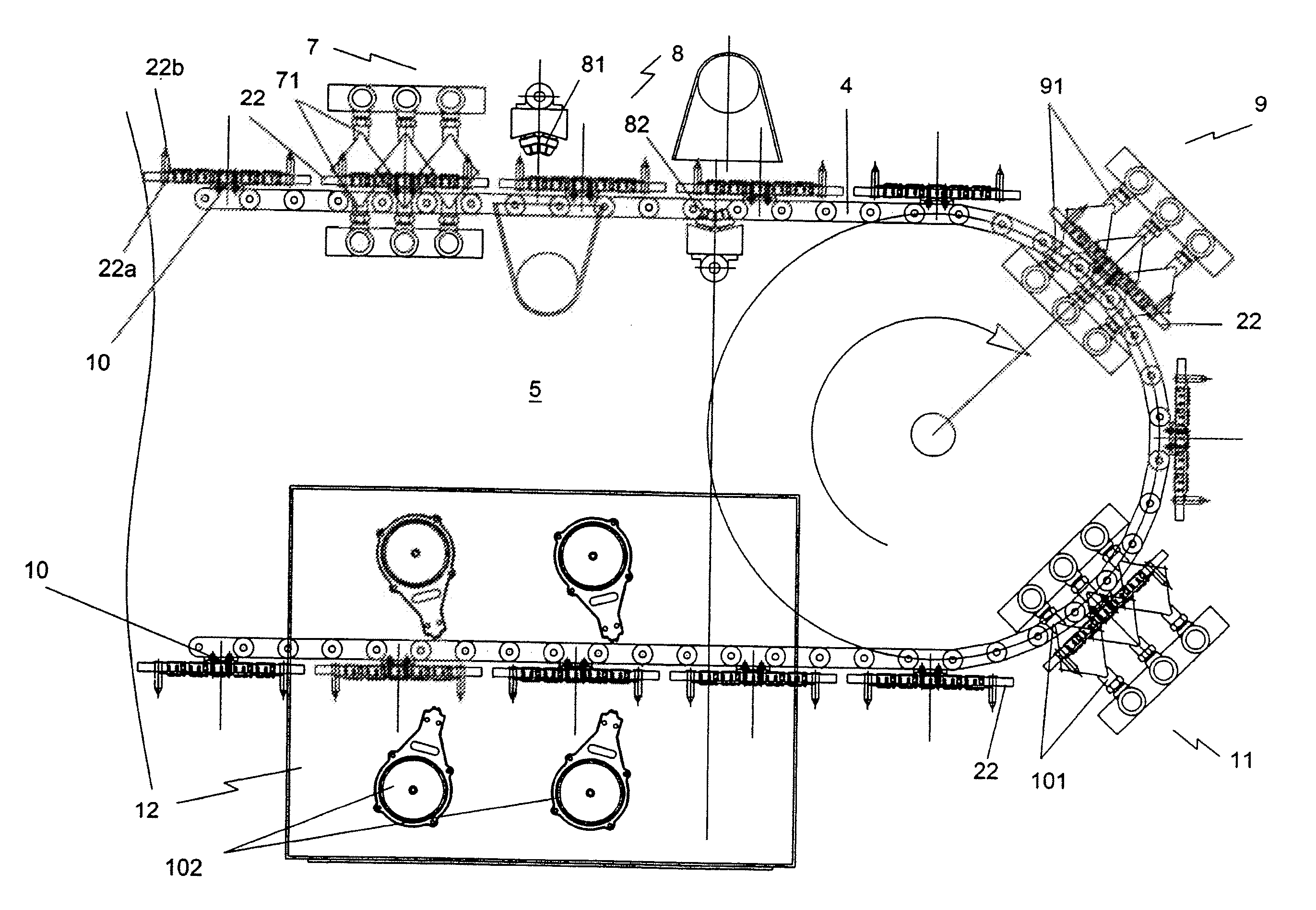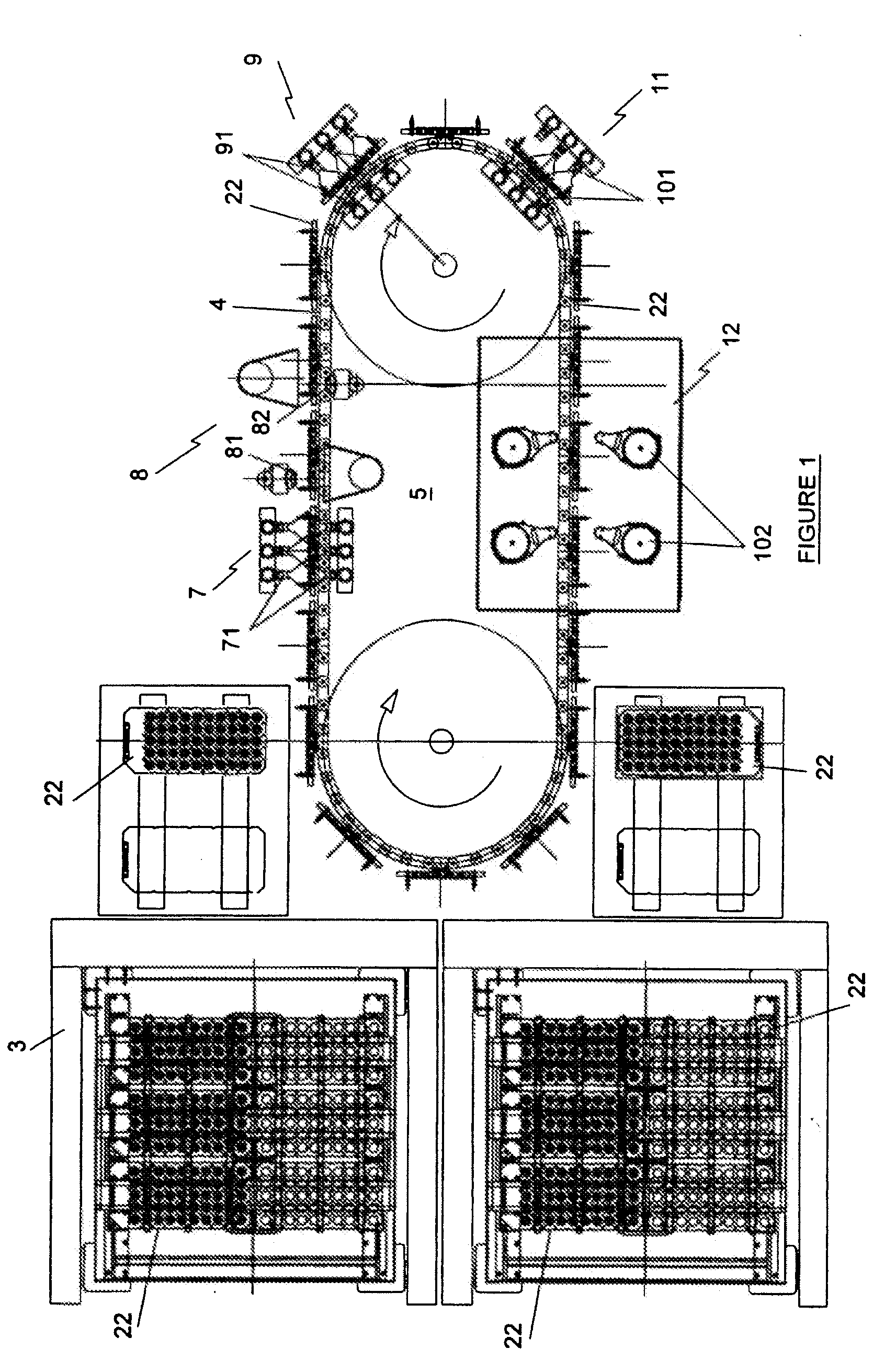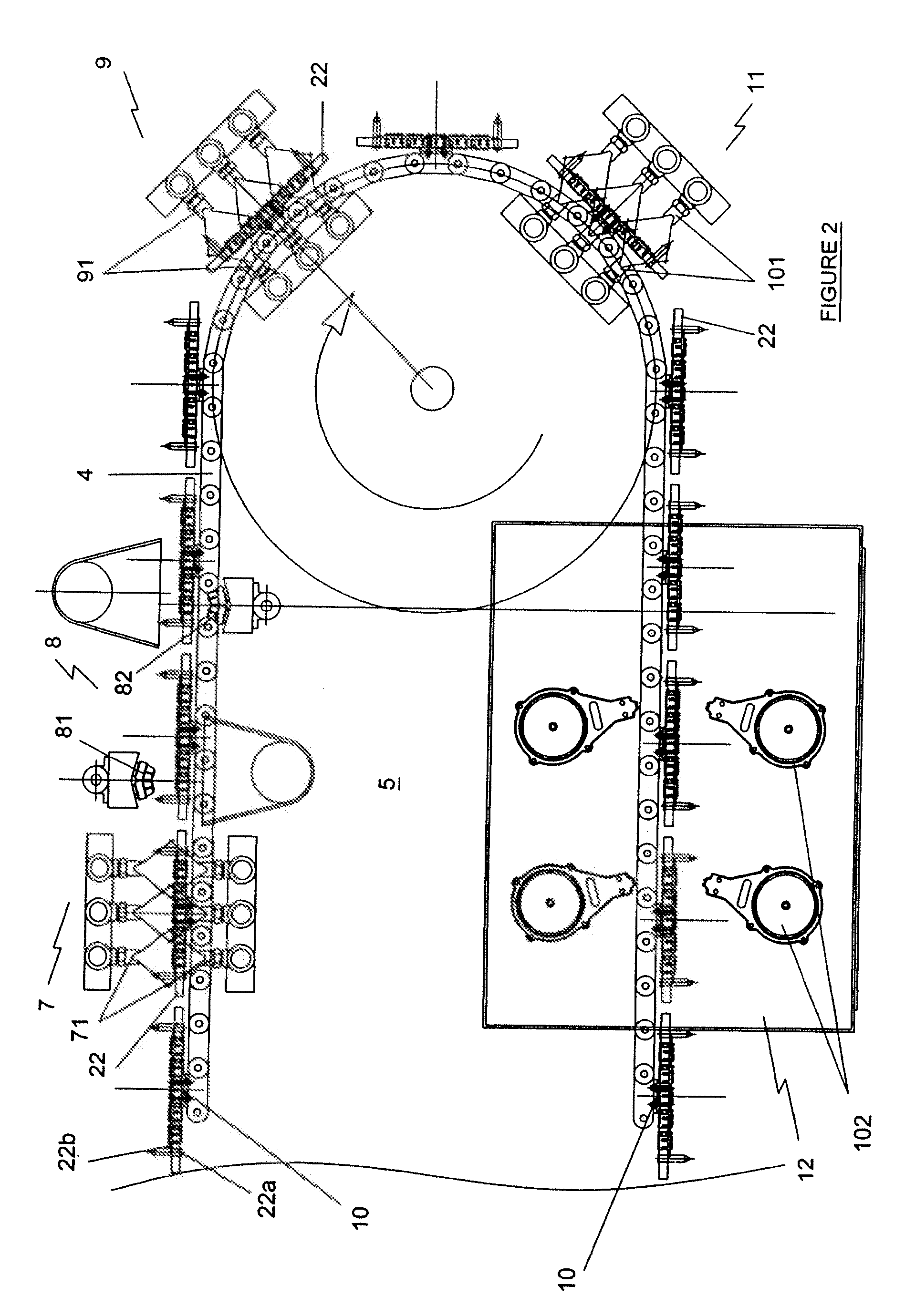System and Method for Cleaning Process Trays
a cleaning process and system technology, applied in the direction of cleaning processes and equipment, chemistry apparatus and processes, etc., can solve the problems of stray lenses being even more difficult to remove, affecting the quality of the next batch of lenses, and rather difficult to remove stray lenses
- Summary
- Abstract
- Description
- Claims
- Application Information
AI Technical Summary
Benefits of technology
Problems solved by technology
Method used
Image
Examples
Embodiment Construction
[0042]The cleaning system of the invention is generally indicated by reference numeral 1 in FIG. 1. The system 1 is most suitable to, but not limited to handling contact lens handling trays having complex-shaped plastic inserts or wire-mesh construction.
[0043]An example of a tray assembly 2 comprising a pair of plastic plates 21 and 22 is shown in FIGS. 3a and 3b. Plate 21 is adapted to carry a plurality of complex-shaped plastic male inserts 25. Plate 22 is adapted to carry a plurality of complex-shaped plastic female inserts 26. Prior to cleaning, plates 25, 26 are held together during various upstream processes, including lens-forming, so that convex surfaces 25a of the male inserts 25 face concave surfaces 26a of the female inserts 26. During those upstream processes, stray lens may adhere to any part of the plates 21, 22. For the cleaning step (to be described below in detail), the plates 21, 22 are separated from each other for individual handling during cleaning. Each plate 2...
PUM
 Login to View More
Login to View More Abstract
Description
Claims
Application Information
 Login to View More
Login to View More - R&D
- Intellectual Property
- Life Sciences
- Materials
- Tech Scout
- Unparalleled Data Quality
- Higher Quality Content
- 60% Fewer Hallucinations
Browse by: Latest US Patents, China's latest patents, Technical Efficacy Thesaurus, Application Domain, Technology Topic, Popular Technical Reports.
© 2025 PatSnap. All rights reserved.Legal|Privacy policy|Modern Slavery Act Transparency Statement|Sitemap|About US| Contact US: help@patsnap.com



